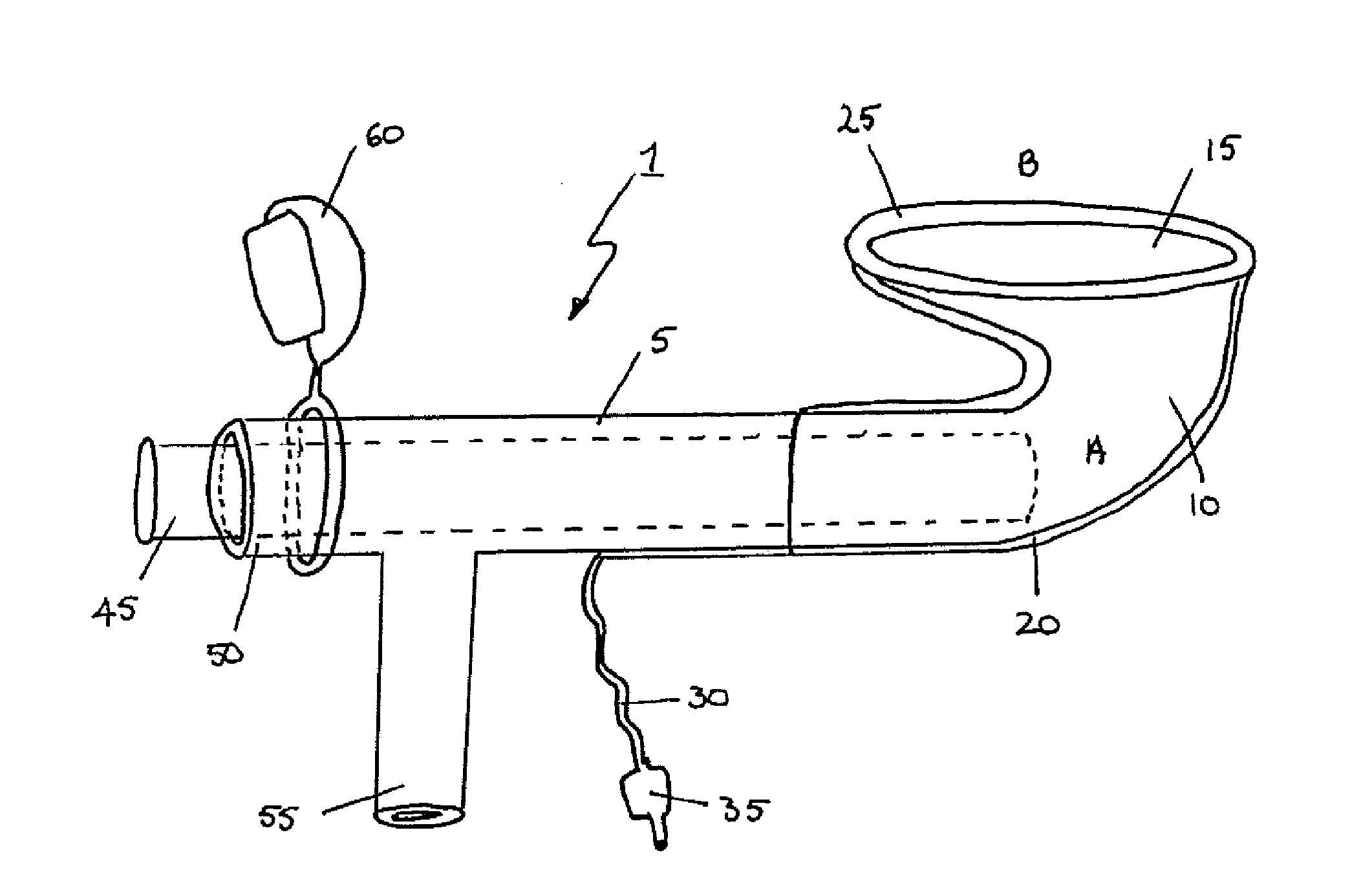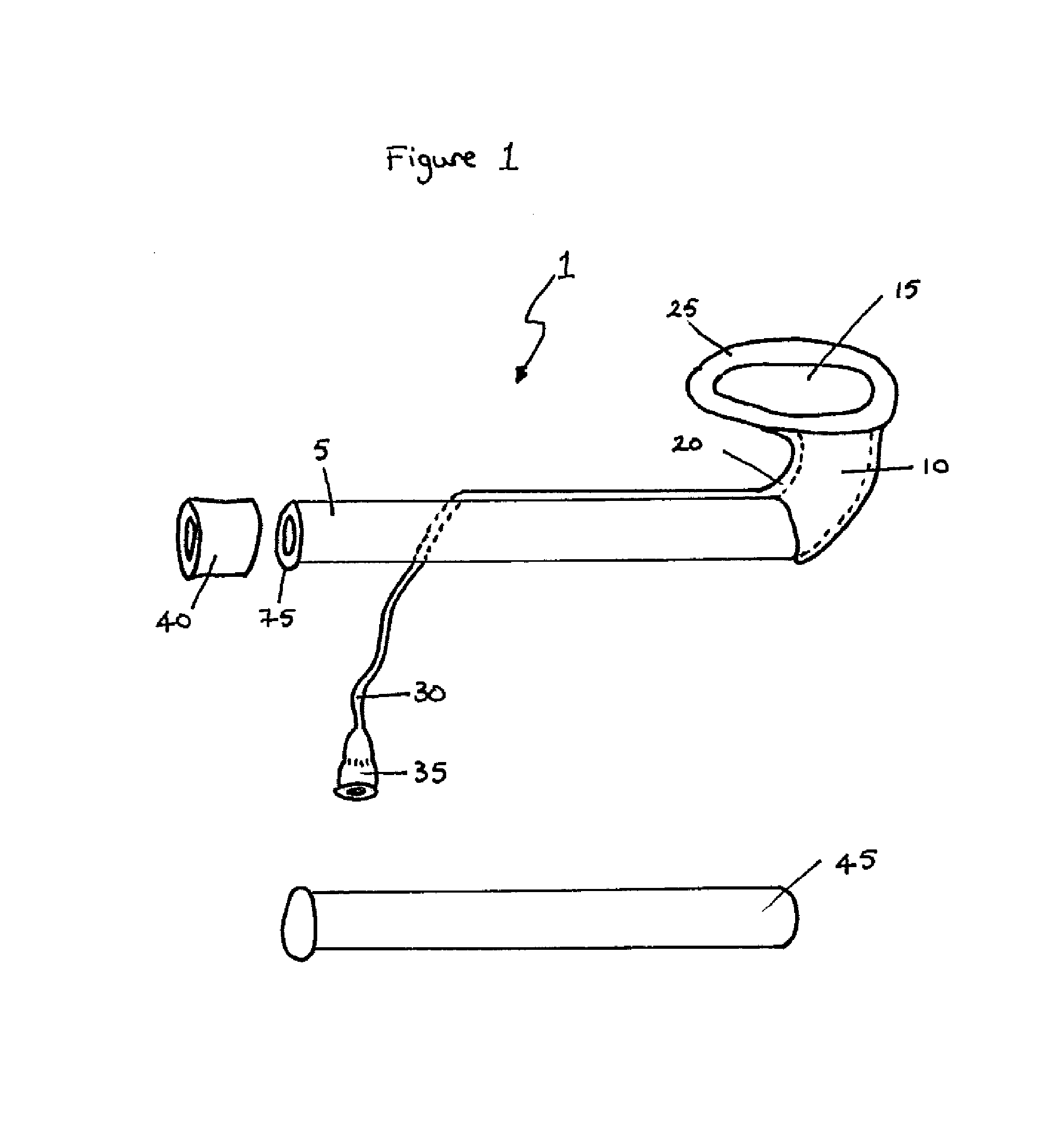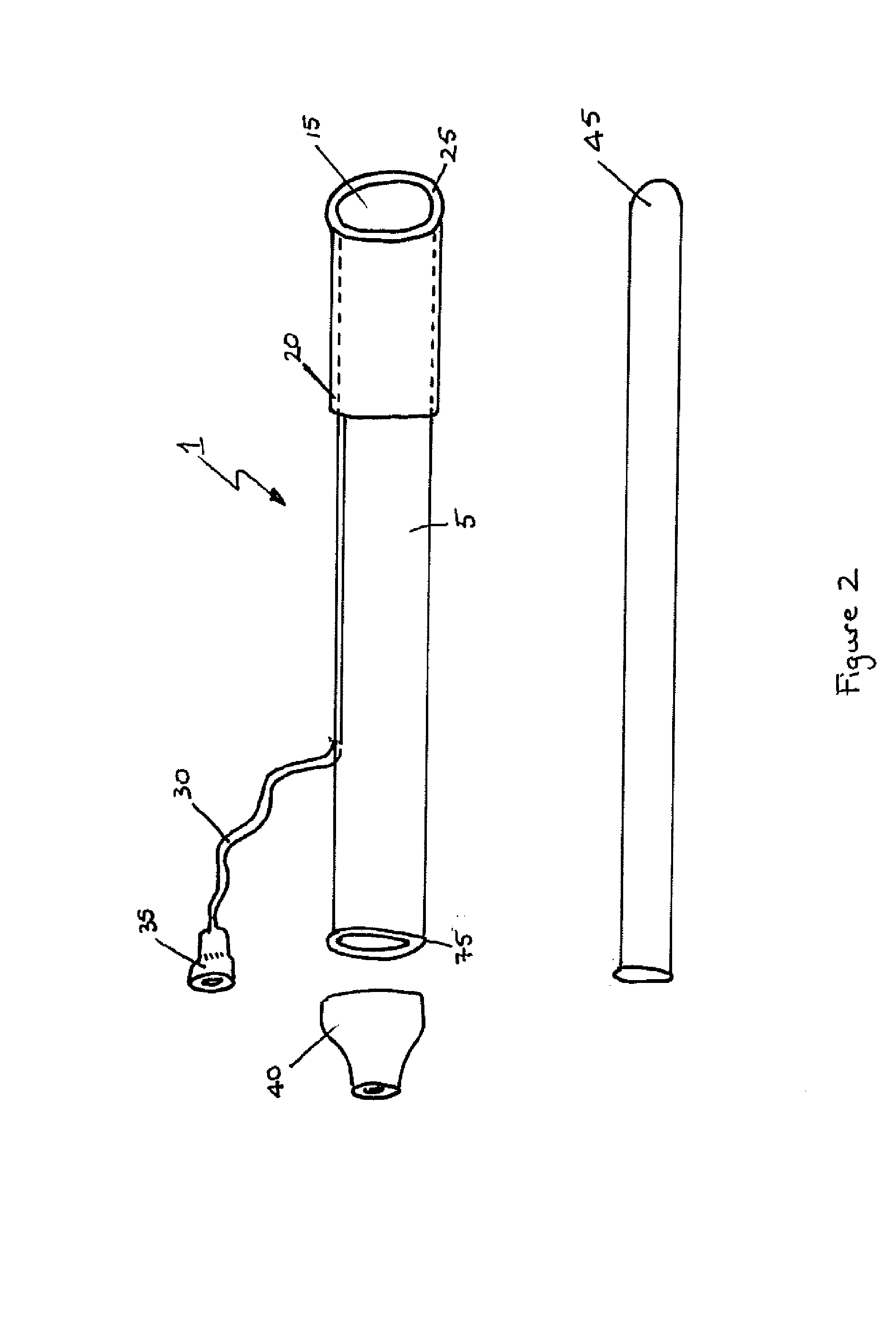Suction device
a suction device and suction tube technology, applied in the field of suction devices, can solve the problems of trauma to the lining of the throat, failure to fully remove the packing, and difficulty in clearing bleeding from the nose, so as to prevent excessive suction and possible collapse of the operative field, facilitate smoke clearing, and prevent excessive suction
- Summary
- Abstract
- Description
- Claims
- Application Information
AI Technical Summary
Benefits of technology
Problems solved by technology
Method used
Image
Examples
Embodiment Construction
[0040]The nasopharangeal device is shown in FIGS. 1 and 2, with a slightly different version shown in FIG. 3. The device 1 includes a tube section 5 and a funnel section 10. The funnel has a mouth 15 which is shaped so as to be able to make contact with the tissue in and around the nasopharangeal opening. The outside of the funnel 10 is surrounded by a sheath 20 which includes a cuff section 25 encircling the mouth 15 of the funnel 10. The sheath 20 and cuff section 25 are inflatable and / or deflatable via an inflation tube 30 which can be connected to an inflation / deflation device (such as a syringe) via connector 35. The end 75 of the tube section 5 can be connected to a suction device via connector 40, to facilitate suction of fluids through the device via the funnel mouth.
[0041]FIGS. 1 and 2 also show an obturator 45 outside the device, the obturator 45 being a solid cylinder of, for example, a plastics material. FIG. 3 shows the obturator 45 in place within the device 1, having ...
PUM
 Login to View More
Login to View More Abstract
Description
Claims
Application Information
 Login to View More
Login to View More - R&D
- Intellectual Property
- Life Sciences
- Materials
- Tech Scout
- Unparalleled Data Quality
- Higher Quality Content
- 60% Fewer Hallucinations
Browse by: Latest US Patents, China's latest patents, Technical Efficacy Thesaurus, Application Domain, Technology Topic, Popular Technical Reports.
© 2025 PatSnap. All rights reserved.Legal|Privacy policy|Modern Slavery Act Transparency Statement|Sitemap|About US| Contact US: help@patsnap.com



